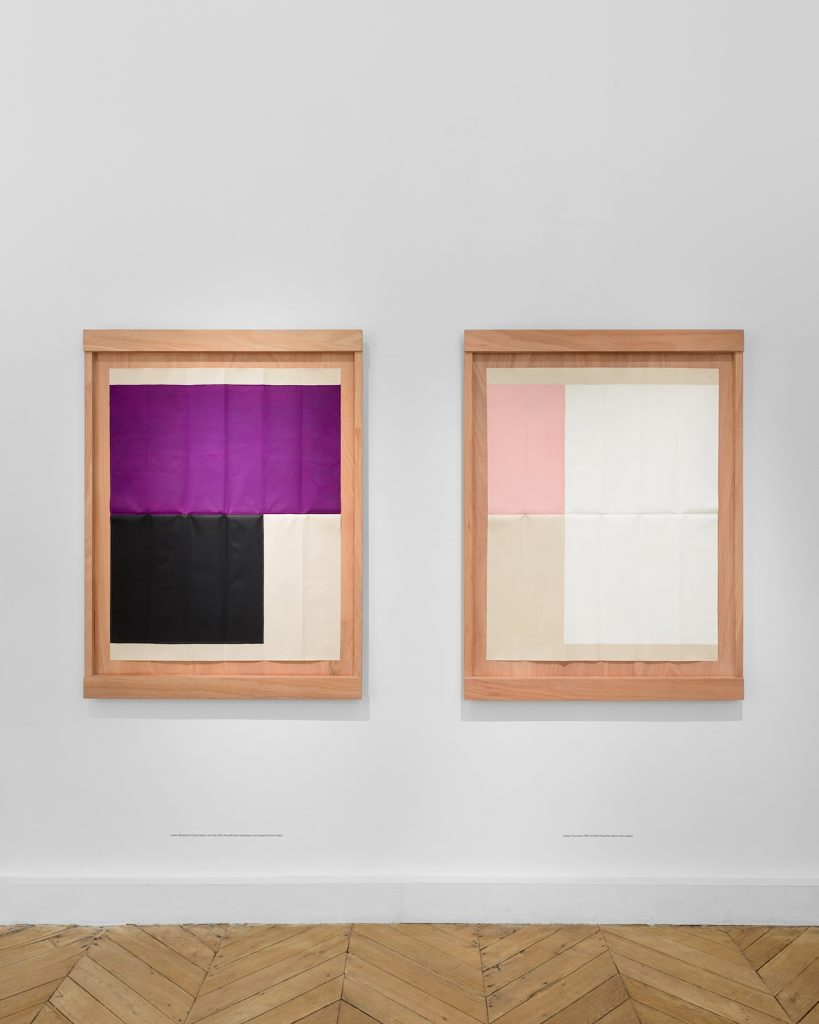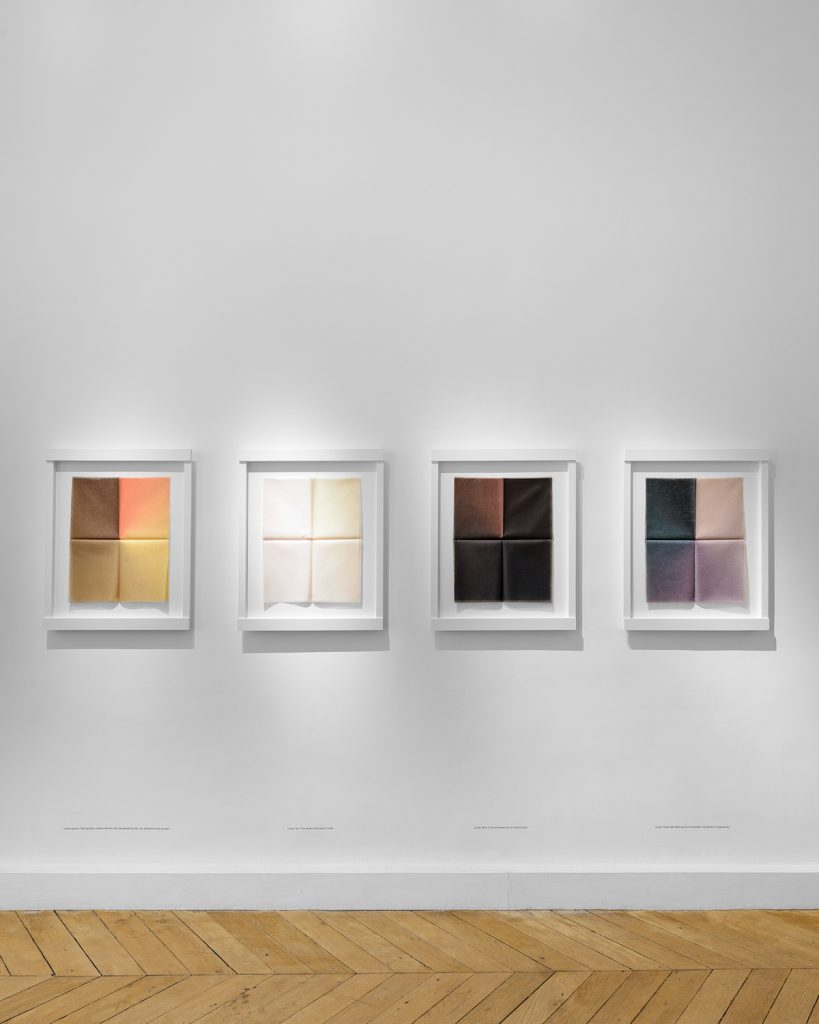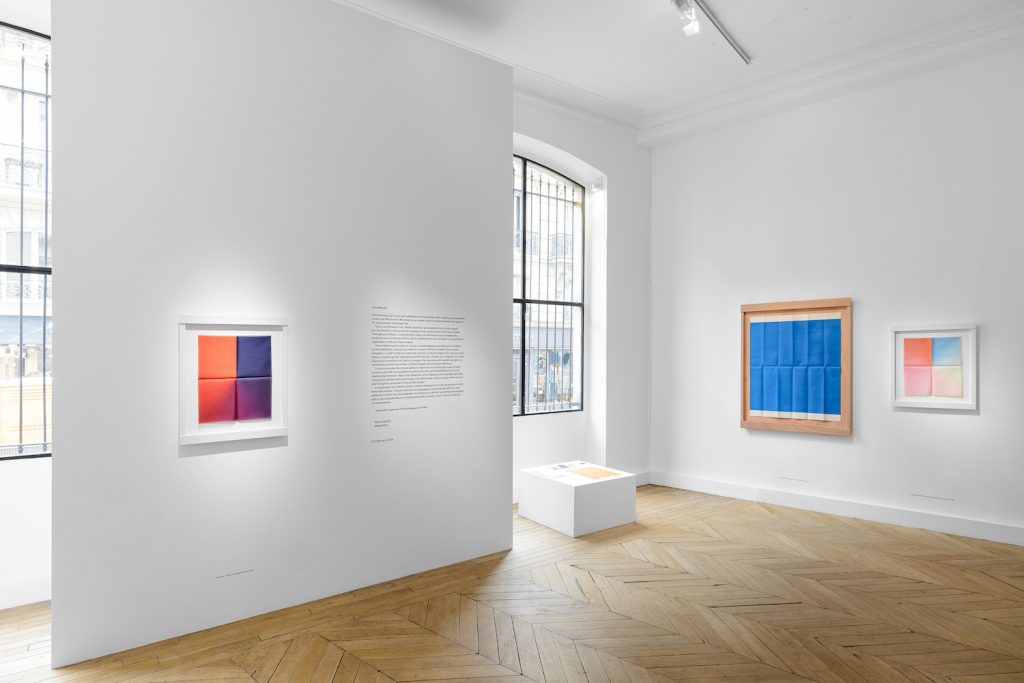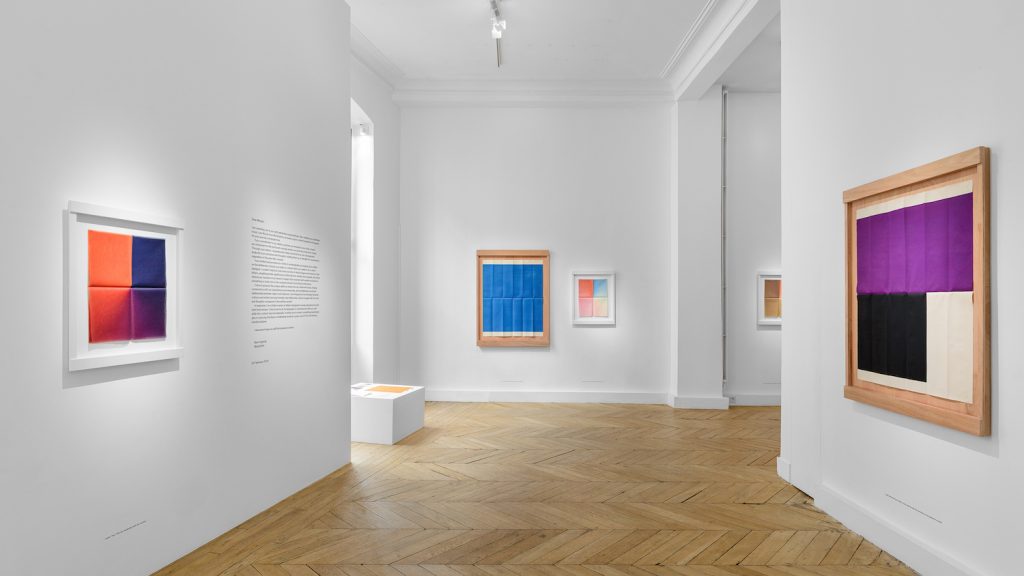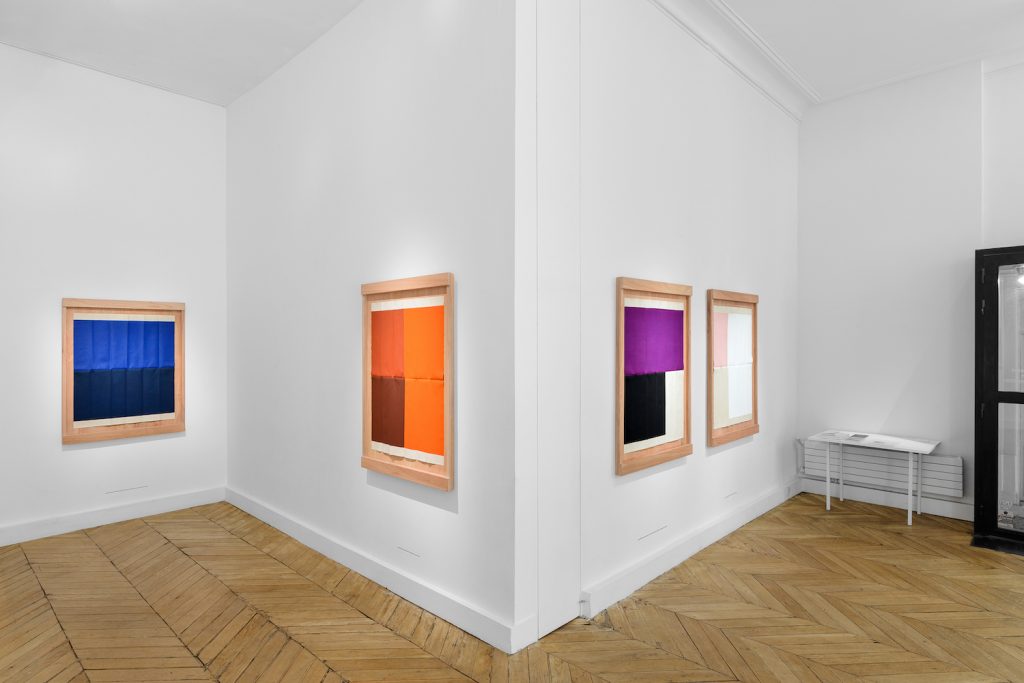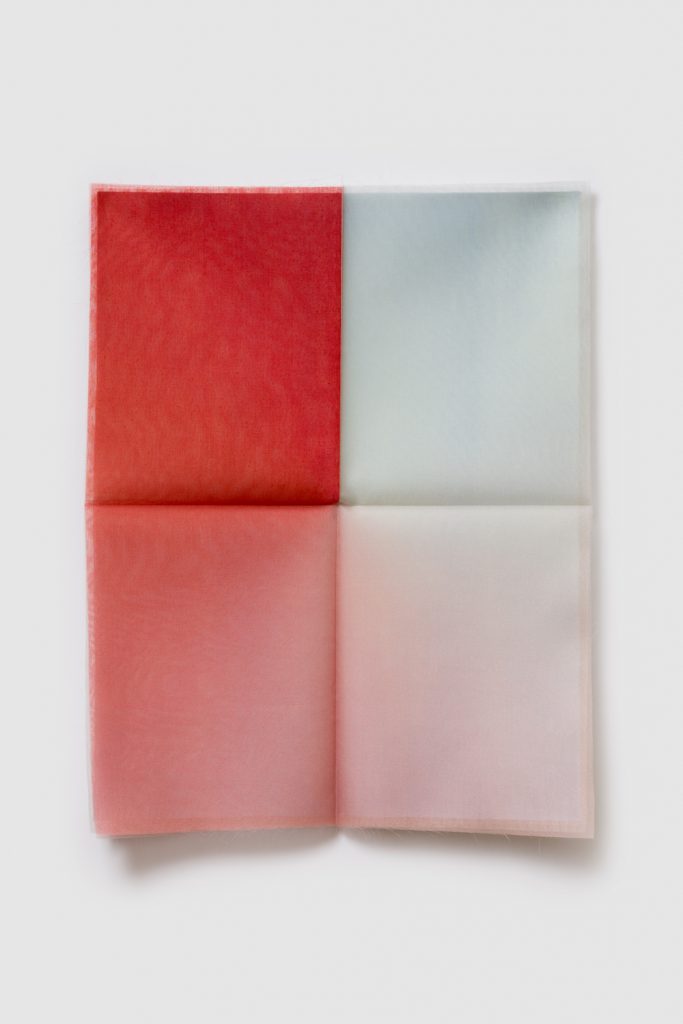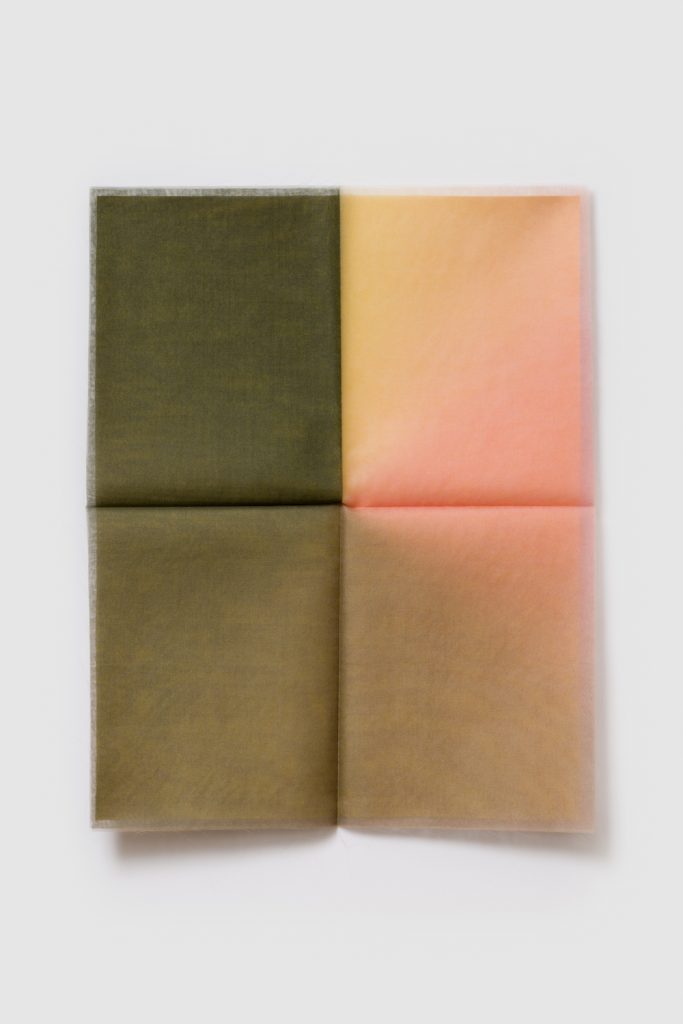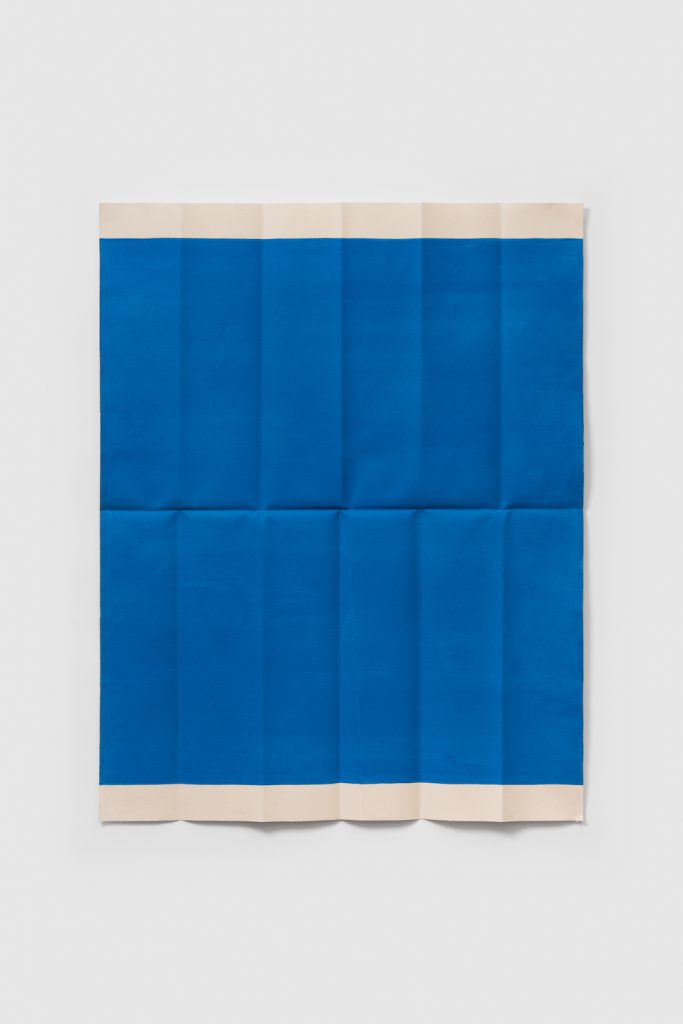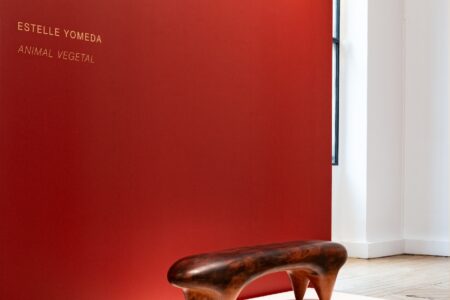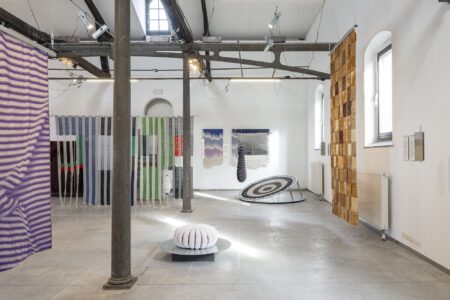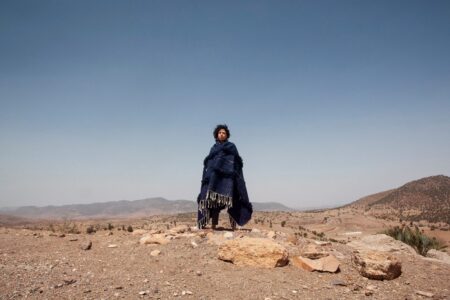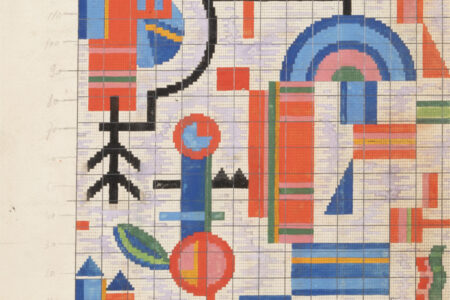
Margrethe Odgaard: Dear Miaojin
For her first solo exhibition with Maria Wettergren Gallery, textile designer and artist Margrethe Odgaard presents “Dear Miaojin”, a series of work made in response to the epistolary book “Last Words from Montmartre,” by the Taiwanese artist Qiu Maiojin.
The fold has long intrigued Danish textile designer and artist Margrethe Odgaard, from a preoccupation of how the fold is an inevitable part of working with textiles or a fascination with how a fold can change the colour and light in a fabric. As she explains: “Folds are part of my DNA. They are such an important part of my field, but we pretend like they are not there, so I wanted to embrace them and in doing so, my fascination grew.” Odgaard has applied this curiosity into works such as the much loved “Fold/Unfold” tablecloth made in 2010 for HAY, or in her long-standing collaboration with Kvadrat. At Maria Wettergren Gallery in Paris, she applies this idea in a more poetic way, in her first exhibition, “Dear Miaojin.”
“My work is very occupied with how we can use colours and textiles to communicate with those around us and reach the soul and mind of others,” Odgaard says. And she was interested in how authors use colours in their written texts to develop and build character and mood. So, the idea to combine these ideas came about, and, she says, “I thought that a letter would be the perfect format to do that in this exhibition, specifically of those [letters] of a writer.”
She began to research epistolary books and came across Qiu Maiojin’s book, “Last Words from Montmartre.” Maiojin was a young Taiwanese writer living in Paris in the mid 1990s, struggling with issues of her own sexuality as well as with separation, from her country, her family and loved ones. The book, we learn, is in fact a suicide letter, as the author stabbed herself soon after its publication.
With “Last Words from Montmartre,” Odgaard read through and highlighted all the passages that used colour in their description. She describes the works she made as a response to Maiojin’s book of personal letters. “I wanted to reach her soul like she did mine,” Odgaard says.
The exhibition includes two series of work, or “letters”. The smaller sized works consist of three-layers of thin, transparent silk organza printed with a reactive dye and a heavier cotton canvas painted with egg tempera. These pieces are ethereal in their material and colour and how the light hits them, yet grounded by their folds, a reminder of a certain connection to the human hand. The larger works, which feature a band of white on the top and bottom, are made with lean egg tempera on canvas. The titles of each piece reflect this poetic exploration of human connection, fragility, emotion, for example: “Letter three: My flesh ground to powder, my bones to fragments,” or “Letter nineteen: Goodnight, my Zoe, with the wild hair standing on end against the violet.”
In addition to the works on view, Odgaard wrote a letter to Qiu Maiojin, which is included in a physical and digital publication that was made for the exhibition. In her very personal and poignant letter, Odgaard offers a word of thanks to the author, for her commitment and contribution to literature and describes her own deep connection that developed as she read the book. She writes, “Colours possess the unique ability to reach into our minds and souls, forging connections with our experiences and memories, and establishing a profound relationship between object and observer. I am intrigued by the interplay between colours and written text and wonder, how effectively colours engage with our soul and thoughts compared to the written words?
“Last Words from Montmartre” was a difficult book to read for Odgaard but, she notes, “in a way, I feel like this book chose me. It felt so important and persistent to me to continue. It took all of me to get through it, but then I felt that this is exactly why I have to do it, I needed to go forward with it.”
“Dear Miaojin” is Odgaard’s first exhibition with the Maria Wettergren Gallery and it marks a new chapter in her career in which she wants to give more time to making work as an artist apart from her commercial textile career. It clearly seems like a natural step. She says: “The emotional response from the people who came [to the show] was overwhelming. There were very strong reactions to the pieces. I had such a strong experience reading Miaojin’s book and while it will stay unanswered if I was able to communicate to other people’s souls as she did for me, there is something at play in the exhibition that explores that. Like a poem where you may not understand it but it feels important.”
“Dear Miaojin” is on view through May 18th, 2024.
@galeriamariawettergren
@margretheodgaard
